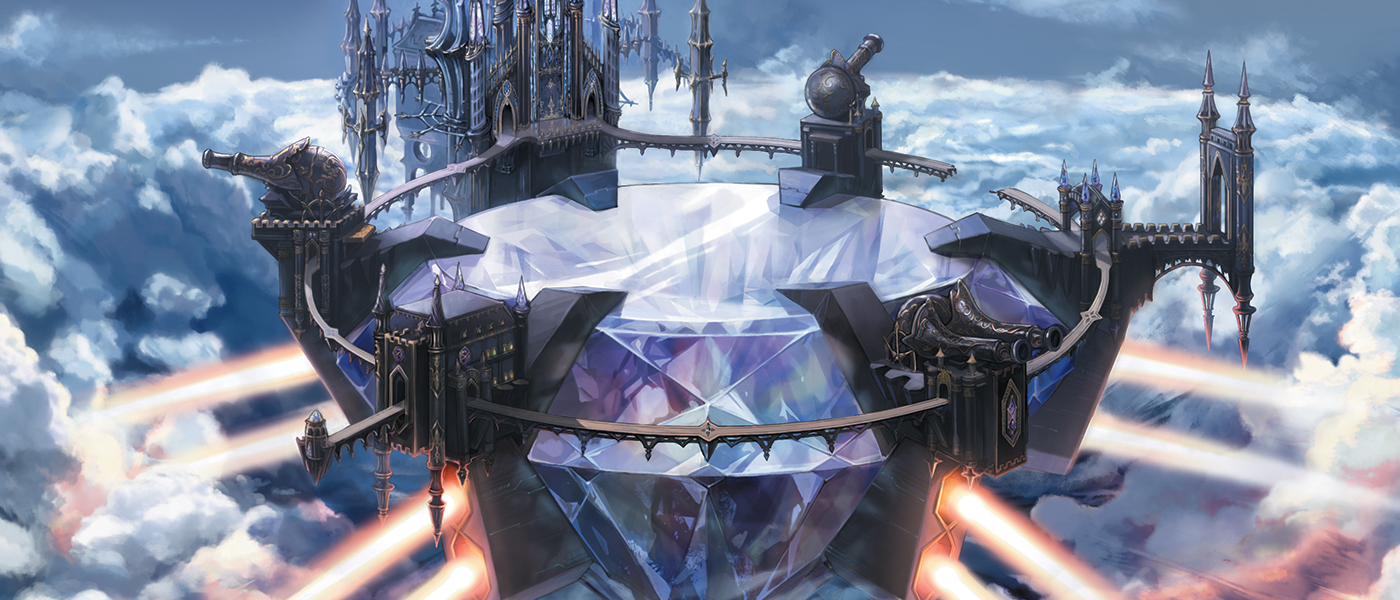The Nintendo 3DS version of Bravely Second: End Layer was primarily tested for the purpose of this review.
Bravely Second: End Layer is an excellent role-playing game with a seemingly simple yet engagingly intricate battle system. The cast are entertaining and third-dimensional while the music and sense of world building are akin to traditional Final Fantasy games of old. Bravely Second: End Layer is a perfect game for fans of the traditional turn-based role playing genre. Its class-based job mechanics and the brave and default system create an entertaining battle system encouraging one of the genre’s common criticisms of grinding, by rewarding players with bonus spoils from battle. Characters’ voices are distinct and as creative as their character design and back-stories. The story of Bravely Second: End Layer is both grand and welcomingly familiar. Set two years after the events of the previous game, players follow Edea and Tiz as well as new characters, the always-optimistic Yew and the mysterious Magnolia, through their quest to rescue the now Pope Agnes from the clutches of the Kaiser and his foreboding diamond-like castle floating in the sky. Without spoiling the game’s narrative, the game’s world and characters are charmingly comedic, even in its most dramatic moments.
The story of Bravely Second: End Layer is both grand and welcomingly familiar. Set two years after the events of the previous game, players follow Edea and Tiz as well as new characters, the always-optimistic Yew and the mysterious Magnolia, through their quest to rescue the now Pope Agnes from the clutches of the Kaiser and his foreboding diamond-like castle floating in the sky. Without spoiling the game’s narrative, the game’s world and characters are charmingly comedic, even in its most dramatic moments.
Each of the cast are also wonderfully characterised. The game offers both a main quest, whereby players travel around the world in search of a way to save Agnes, as well as a variety of side quests following characters from Bravely Default and their lives since the end of the game, making it incredibly rewarding to those who have played the original game. These side quests are fun in their own right and offer great character development to both former bosses and Edea with some quests even parodying pop culture. One side quest followed the adventures of Edea’s former commanding officer and knight Sir Heinkel and Kikyo the shy ninja, now a police constable and private investigator respectively, as they and the party try to solve a murder case with clearly satirical characters Sholmes and Whitson; while another quest involved the party deciding on a town’s education system – choosing whether to side with a co-educational system supported by the brash monk Barras and his pupil, or Edea’s childhood friend, the Valkyrie Einheria, her apprentice and their view towards a segregated education system. There are also non-voiced scenes – often lighthearted comments from the perspectives of each of the party on the plot, characters and certain gameplay mechanics – providing insight on each character’s pasts and their relationships with others, further ironically characterising them as multi-layered despite their miniature appearance.
One side quest followed the adventures of Edea’s former commanding officer and knight Sir Heinkel and Kikyo the shy ninja, now a police constable and private investigator respectively, as they and the party try to solve a murder case with clearly satirical characters Sholmes and Whitson; while another quest involved the party deciding on a town’s education system – choosing whether to side with a co-educational system supported by the brash monk Barras and his pupil, or Edea’s childhood friend, the Valkyrie Einheria, her apprentice and their view towards a segregated education system. There are also non-voiced scenes – often lighthearted comments from the perspectives of each of the party on the plot, characters and certain gameplay mechanics – providing insight on each character’s pasts and their relationships with others, further ironically characterising them as multi-layered despite their miniature appearance.  Bravely Second’s art style is distinctly mesmerising. Each character is modelled as a ‘chibi’ – a miniature cartoon character – with a slight lisp to their voice as a result of the recording equipment used in the recording studios, adding to the adorably cheesy tone of most scenes. Players can change characters’ costumes by equipping outfits such as Yew’s cavalier uniform or by changing a character’s job – with some, such as the ranger even changing a character’s facial appearance – as each job outfit is colourfully created to help contextualise said outfit’s job, such as the Knight’s heavy-clad armour mirroring the job’s high defence or the Bishop’s priest gown emphasising the job’s healing magic.
Bravely Second’s art style is distinctly mesmerising. Each character is modelled as a ‘chibi’ – a miniature cartoon character – with a slight lisp to their voice as a result of the recording equipment used in the recording studios, adding to the adorably cheesy tone of most scenes. Players can change characters’ costumes by equipping outfits such as Yew’s cavalier uniform or by changing a character’s job – with some, such as the ranger even changing a character’s facial appearance – as each job outfit is colourfully created to help contextualise said outfit’s job, such as the Knight’s heavy-clad armour mirroring the job’s high defence or the Bishop’s priest gown emphasising the job’s healing magic. While the over-world map isn’t particularly beautiful, each area is strikingly different from one another. Within my 40 hours with the game, I’ve experienced poisonous swampy terrains, a floating village in the sky and a hot spring resort, among other iconic areas. The explorable parts of these areas are illustrated by beautifully painted canvases on the top screen while the map of the area is outlined on the lower screen. Enemy and character designs are also quite appealing, as players battle a variety of creatures such as a tree spirit in the shape of a floating pile of sliced apples and a cat spirit in a gentleman’s suit. The soundtrack is also immersive and diverse, with a mixture of peaceful flute ensemble titles played during the save or party menus, jazzy piano solos dictating a town and the merchant menu, and coarse Japanese rock opera for the more iconic boss battles.
While the over-world map isn’t particularly beautiful, each area is strikingly different from one another. Within my 40 hours with the game, I’ve experienced poisonous swampy terrains, a floating village in the sky and a hot spring resort, among other iconic areas. The explorable parts of these areas are illustrated by beautifully painted canvases on the top screen while the map of the area is outlined on the lower screen. Enemy and character designs are also quite appealing, as players battle a variety of creatures such as a tree spirit in the shape of a floating pile of sliced apples and a cat spirit in a gentleman’s suit. The soundtrack is also immersive and diverse, with a mixture of peaceful flute ensemble titles played during the save or party menus, jazzy piano solos dictating a town and the merchant menu, and coarse Japanese rock opera for the more iconic boss battles. The most engaging part of Bravely Second: End Layer however is its gameplay and the brave-default mechanic. In combat, the player assigns an action for each character for a given turn, such as attacking, using an ability or items or fleeing the battle – or the player can decide to defend and save a battle point in what is known as defaulting, or use up a battle point to use an additional action by braving. Players can gain up to three battle points and lose up to three battle points, leaving a character on minus three if they brave three times when at the standard zero battle points, resulting in the given character missing three turns; adding a great sense of strategy to battles, especially since this mechanic applies to enemies too. Enemies also have their own strengths and weaknesses as players can equip gear mid-battle and use examine to identify said enemy’s weakness.
The most engaging part of Bravely Second: End Layer however is its gameplay and the brave-default mechanic. In combat, the player assigns an action for each character for a given turn, such as attacking, using an ability or items or fleeing the battle – or the player can decide to defend and save a battle point in what is known as defaulting, or use up a battle point to use an additional action by braving. Players can gain up to three battle points and lose up to three battle points, leaving a character on minus three if they brave three times when at the standard zero battle points, resulting in the given character missing three turns; adding a great sense of strategy to battles, especially since this mechanic applies to enemies too. Enemies also have their own strengths and weaknesses as players can equip gear mid-battle and use examine to identify said enemy’s weakness.
There is also a class-based job system where characters defeat a class-based boss to gain their job asterisk, allowing the player to equip each of their party as the given job – new jobs are unlocked by completing the main story while jobs from the previous game are gained through the various side quests. Each job has its own weapon proficiencies, skills, stats and passive skills, as well as a distinct outfit. Black mages have low physical defence and are unskilled in battle axes but can cast devastating spells such as dark and flare; while the charioteer is a class based on heavy offence with the ability to wield additional weapons to the given character’s head and armour equipment slots, significantly boosting their physical attack.
Players can also equip a secondary job to use other jobs’ abilities, as well as passive skills. Some jobs are even recommended to be chained together such as the healer-based bishop class and the wizard’s ability to apply spells to the entire party over multiple turns, an essential spell for end-game. Choosing which class to assign your characters to, and by extension, their role in the party, is part of what makes Bravely Second so fun. Players can tweak the random encounter rate from zero encounters to double the rate in the lower screen menu to encourage grinding. I found myself grinding for thirty minutes or so around a save point at the beginning of every dungeon until I was at the maximum level recommended for the area but that was often to grind a job to unlock a new ability than to further level my characters. The game rewards grinding by granting the player a bonus rate of experience points, job points and in-game money by finishing a battle untouched and within one turn – which is often more of a gamble than anything else since the chained bonuses tempt the player to continue fighting a fourth group of enemies even when their party has minus four battle points.
Players can tweak the random encounter rate from zero encounters to double the rate in the lower screen menu to encourage grinding. I found myself grinding for thirty minutes or so around a save point at the beginning of every dungeon until I was at the maximum level recommended for the area but that was often to grind a job to unlock a new ability than to further level my characters. The game rewards grinding by granting the player a bonus rate of experience points, job points and in-game money by finishing a battle untouched and within one turn – which is often more of a gamble than anything else since the chained bonuses tempt the player to continue fighting a fourth group of enemies even when their party has minus four battle points.
The game also offers a few mini-games, some more entertaining and rewarding than others. Players can access the streetpass component of the game whereby the player can restore Magnolia’s village by assigning villagers – streetpassed users – to areas around the town, rewarding the player with items or special skills usable in battle after reaching a requirement, such as defaulting ten times in battle, often boosting the party’s stats before striking at an enemy for high damage. Players can also send their characters to other players and summon friends in battle for a turn; as well as equip their friends to their characters by ‘abilinking’, giving them access to their friends’ job levels; and potentially unlocking high-level abilities early in the game which may break your experience with the game.  Bravely Second: End Layer continues to exceed at what its predecessor Bravely Default did best. Yet, unlike its predecessor the game feels like a completely original Japanese role-playing game, rather than a reboot of the original Final Fantasy and its four heroes of light. With a highly engaging cast, immersive world and expansively dynamic battle system, the game is both welcoming to newcomers and rewarding to fans of the series.
Bravely Second: End Layer continues to exceed at what its predecessor Bravely Default did best. Yet, unlike its predecessor the game feels like a completely original Japanese role-playing game, rather than a reboot of the original Final Fantasy and its four heroes of light. With a highly engaging cast, immersive world and expansively dynamic battle system, the game is both welcoming to newcomers and rewarding to fans of the series.



